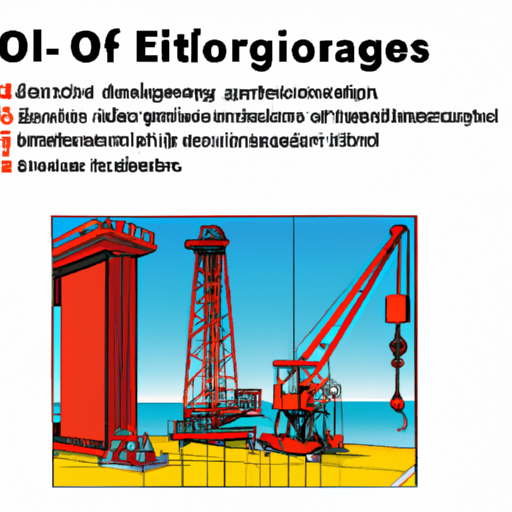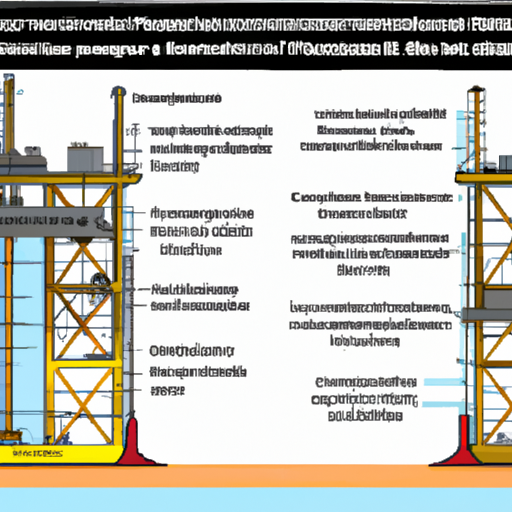The Importance and Functionality of Oil Rig Elevators in Offshore Operations

Introduction:
Oil rig elevators play a crucial role in ensuring the smooth and efficient operations of offshore drilling platforms. These specialized elevators are designed to transport personnel, equipment, and materials between various levels of an oil rig, enabling the workforce to perform their duties safely and effectively. In this article, we will explore the significance of oil rig elevators, their types, functionalities, safety features, maintenance requirements, and their impact on the overall efficiency of offshore operations.
1. The Significance of Oil Rig Elevators:
Oil rig elevators are essential for the transportation of personnel, heavy machinery, and supplies vertically across multiple levels of an offshore drilling platform. They provide a safe and reliable means of movement, ensuring that workers can access different areas of the rig with ease. Without these elevators, manual transportation using stairs or ladders would be time-consuming and potentially dangerous, affecting the productivity and safety of the entire operation.
2. Types of Oil Rig Elevators:
a) Personnel Elevators:

Designed to transport workers between different levels of the rig, personnel elevators prioritize safety and comfort. They are equipped with multiple safety features, including emergency stop buttons, interlocks, and backup power systems to ensure the well-being of the workforce. Personnel elevators are often spacious and can accommodate a significant number of individuals.
b) Material Elevators:
Material elevators are used to transport heavy equipment, machinery, and supplies required for oil rig operations. These elevators are designed to withstand heavy loads and are equipped with features such as reinforced platforms, sturdy hoisting systems, and secure locking mechanisms to prevent accidents and damage during transportation.
c) Service Elevators:
Service elevators are employed for the transportation of various maintenance and repair equipment, tools, and spare parts. They are designed to facilitate quick and efficient movement of personnel and materials required for routine maintenance tasks, ensuring the uninterrupted functioning of the rig.
3. Functionalities of Oil Rig Elevators:
a) Vertical Transportation:
The primary function of oil rig elevators is to provide vertical transportation between different levels of the drilling platform. Whether it is moving personnel, heavy equipment, or supplies, elevators enable efficient movement, saving time and energy compared to using stairs or ladders.
b) Emergency Evacuation:
In the event of an emergency, such as a fire or a blowout, oil rig elevators serve as vital escape routes. They allow for the rapid evacuation of personnel from higher levels to the designated safe areas or lifeboats, minimizing the risk of injuries or fatalities during emergencies.
c) Rig Logistics:
Oil rig elevators contribute to the logistical efficiency of the platform by facilitating the movement of personnel and materials required for drilling, production, and maintenance operations. They help reduce downtime and increase productivity by eliminating the need for time-consuming manual transportation methods.
4. Safety Features of Oil Rig Elevators:
Safety is of paramount importance in offshore operations, and oil rig elevators are equipped with various features to ensure the well-being of the workforce. These safety features include:
a) Emergency Stop Buttons:
Elevators are equipped with easily accessible emergency stop buttons that allow immediate halting of the elevator in case of emergencies or malfunctions.
b) Interlocks:
Interlocks prevent unauthorized access to the elevator shafts and cabins, ensuring that only authorized personnel can operate or use the elevators.
c) Backup Power Systems:
To prevent entrapment during power outages, oil rig elevators are equipped with backup power systems that ensure the elevators can still function and transport personnel during emergencies.
d) Overload Protection:
To prevent accidents and damage, oil rig elevators are equipped with overload protection mechanisms that automatically halt the elevator if the weight limit is exceeded.
5. Maintenance Requirements for Oil Rig Elevators:
Regular maintenance is crucial to ensure the optimal performance and longevity of oil rig elevators. The maintenance tasks include:
a) Inspection:
Routine inspections are conducted to identify any signs of wear and tear, mechanical issues, or safety hazards. These inspections help identify and address potential problems before they become major concerns.
b) Lubrication:
Proper lubrication of elevator components is essential to minimize friction, reduce wear, and ensure smooth and efficient operation.
c) Cleaning:
Regular cleaning of elevator cabins, doors, and shafts helps prevent the accumulation of debris, dust, and other contaminants that could affect the elevator's functionality.
d) Testing:
Periodic testing of safety features, emergency systems, and overall elevator performance is conducted to ensure that the elevators meet the required safety standards.
6. Impact on Offshore Operations:
Oil rig elevators significantly impact the efficiency and productivity of offshore operations. By providing quick and safe vertical transportation, they reduce downtime associated with manual movement, allowing workers to focus on their tasks and complete them more efficiently. Additionally, in emergencies, the presence of functional elevators ensures the swift evacuation of personnel, minimizing the risk of injuries or fatalities.
Conclusion:
Oil rig elevators are indispensable components of offshore drilling platforms. They provide a safe and efficient means of transportation for personnel, equipment, and supplies, enhancing the overall productivity and safety of oil rig operations. With their advanced safety features, varied functionalities, and regular maintenance requirements, oil rig elevators continue to play a vital role in the success of offshore drilling activities.




 8613371530291
8613371530291